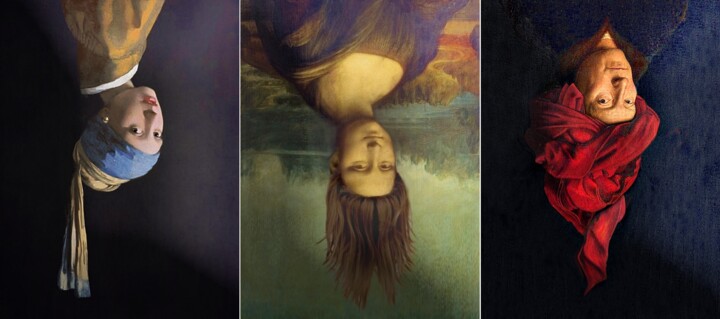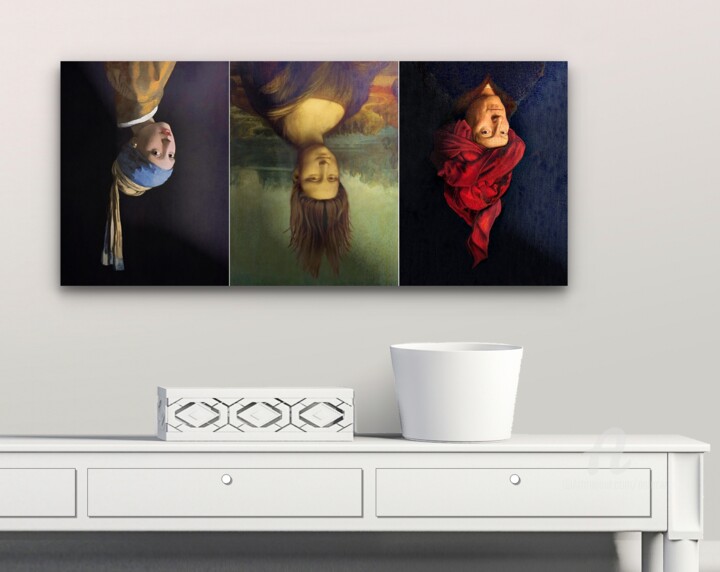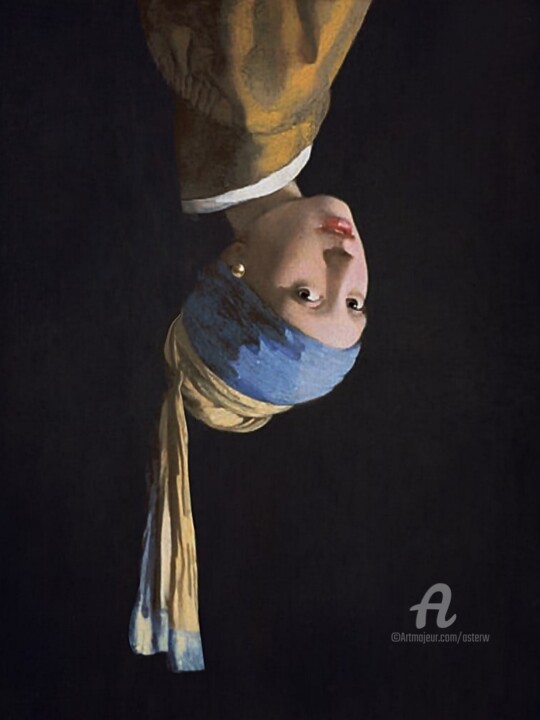
© 2023 Astr

© 2023 Astr

© 2023 Astr

© 2023 Astr

© 2023 Astr
TRIPTYQUE DES CHEFS-D'ŒUVRE DE LA CAMERA OBSCURA (2023) 数字艺术 由 Astr
不出售
卖家 Astr
-
原创艺术品 (One Of A Kind)
数字艺术,
数字油画
在帆布上
- 外形尺寸 高度 15.8in, 宽度 35.4in
- 艺术品状况 工作状况非常好
- 是否含画框 此作品未装裱
- 分类 电子艺术品 低于US$5,000
TRIPTYQUE DES CHEFS-D'ŒUVRE DE LA CAMERA OBSCURA. Johannes Vermeer, La Jeune Fille à la perle, 30 x 40 x 2 cm. Leonardo da Vinci, La Jaconde, Mona Lisa, 30 x 40 x 2 cm. Jan van Eyck, L'Homme au turban rouge, 30 x 40 x 2 cm. •. La Camera Obscura est un appareil optique ancien. Dans sa forme la plus élémentaire, il s'agit tout simplement d'une pièce [...]
TRIPTYQUE DES CHEFS-D'ŒUVRE DE LA CAMERA OBSCURA
Johannes Vermeer, La Jeune Fille à la perle, 30 x 40 x 2 cm.
Leonardo da Vinci, La Jaconde, Mona Lisa, 30 x 40 x 2 cm.
Jan van Eyck, L'Homme au turban rouge, 30 x 40 x 2 cm.
•
La Camera Obscura est un appareil optique ancien.
Dans sa forme la plus élémentaire, il s'agit tout simplement d'une pièce sombre avec un petit trou dans un mur.
Sur le mur opposé au trou, une image est formée de tout ce qui est à l'extérieur.
Cela provoque l'affichage de l'image « à l'envers ».
•
Depuis plus de 100 ans, il a été suggéré que le grand maître hollandais du XVIIe siècle Johannes Reyniersz. Vermeer (alias Jan van der Meer van Delft, Pays-Bas) a utilisé la camera obscura comme aide à la peinture.
La camera obscura était le prédécesseur de l'appareil photographique, mais sans le film ou la plaque sensible à la lumière.
• • • •
Johannes Vermeer, Girl with a Pearl Earring, 30 x 40 x 2 cm.
Leonardo da Vinci, The Mona Lisa, 30 x 40 x 2 cm.
Jan van Eyck, The Man in the Red Turban, 30 x 40 x 2 cm.
•
The Camera Obscura is an old optical device.
In its most basic form, it's just a dark room with a small hole in the wall.
On the wall opposite the hole, an image is formed of whatever is outside.
This causes the image to display “upside down”.
•
For over 100 years it has been suggested that the great 17th century Dutch master Johannes Reyniersz. Vermeer (aka Jan van der Meer van Delft, Netherlands) used the camera obscura as a painting aid.
The camera obscura was the predecessor of the photographic camera, but without the film or the light-sensitive plate.
Johannes Vermeer, La Jeune Fille à la perle, 30 x 40 x 2 cm.
Leonardo da Vinci, La Jaconde, Mona Lisa, 30 x 40 x 2 cm.
Jan van Eyck, L'Homme au turban rouge, 30 x 40 x 2 cm.
•
La Camera Obscura est un appareil optique ancien.
Dans sa forme la plus élémentaire, il s'agit tout simplement d'une pièce sombre avec un petit trou dans un mur.
Sur le mur opposé au trou, une image est formée de tout ce qui est à l'extérieur.
Cela provoque l'affichage de l'image « à l'envers ».
•
Depuis plus de 100 ans, il a été suggéré que le grand maître hollandais du XVIIe siècle Johannes Reyniersz. Vermeer (alias Jan van der Meer van Delft, Pays-Bas) a utilisé la camera obscura comme aide à la peinture.
La camera obscura était le prédécesseur de l'appareil photographique, mais sans le film ou la plaque sensible à la lumière.
• • • •
Johannes Vermeer, Girl with a Pearl Earring, 30 x 40 x 2 cm.
Leonardo da Vinci, The Mona Lisa, 30 x 40 x 2 cm.
Jan van Eyck, The Man in the Red Turban, 30 x 40 x 2 cm.
•
The Camera Obscura is an old optical device.
In its most basic form, it's just a dark room with a small hole in the wall.
On the wall opposite the hole, an image is formed of whatever is outside.
This causes the image to display “upside down”.
•
For over 100 years it has been suggested that the great 17th century Dutch master Johannes Reyniersz. Vermeer (aka Jan van der Meer van Delft, Netherlands) used the camera obscura as a painting aid.
The camera obscura was the predecessor of the photographic camera, but without the film or the light-sensitive plate.















